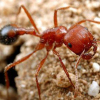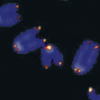The newest threat to the worlds ant fauna, this destructive pest is one of the worst invasives on the planet, even surpassing solenopsis invicta. It was originally from the atacama desert in Chile, one of the driest places on earth. Because of this, the species evolved many absurd survival traits, such as being supercolonial, which allows colonies to share the scarce amount of food. Unfertilized queens are capable of producing tons of males to fertilize them, as well as to fertilize other queens in other nests through massive nuptial flights. Because of all these traits, they have become extremely invasive and spread to almost every part of the world, including cold climates, where they take advantage of the colder and wetter temperatures as well as the new abundance of food. They can nest in just about anything, from cracks to soil and even electronics. They also split extremely often and have many nests with hundreds of queens. Queens themselves also produce hundreds of new queens and males in a single batch of eggs. Newly mated queens often produce these queens In the same batch as their first nanitics, allowing for unimaginable growth in captivity. Their huge appetite is also bad for other ants, as they will easily outcompete them and raid their nests for even more food in the form of their brood and even queens. They can use chemicals to passify their prey and then easily kill them. No solutions to the problem have come up as they always seem to bounce back from everything we throw at them.
Edited by Manitobant, October 16 2019 - 12:10 PM.





















